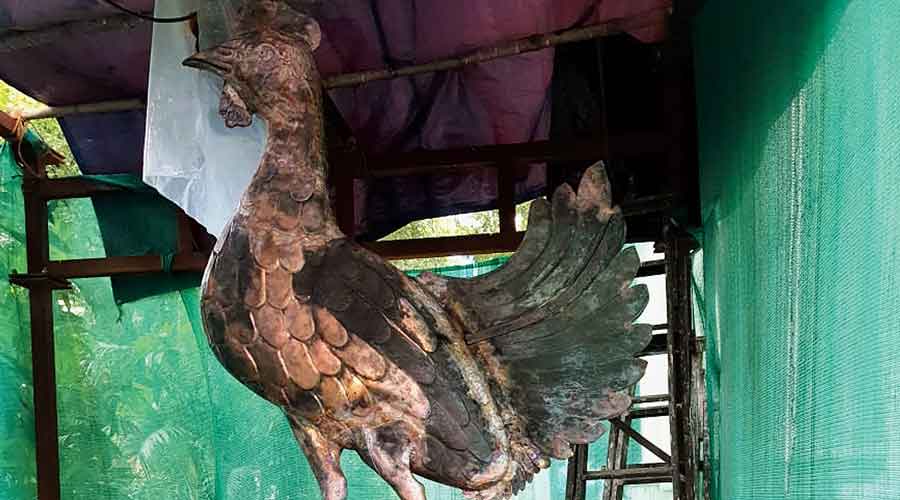Getting the weather cock back atop St Andrew’s Church is a challenge, now that it is ready after repairs.
The bird had been destroyed by Cyclone Amphan in 2020. Now the 60kg bird needs to be hauled up 120ft atop St Andrew’s spire for installation. Right now the spire is surrounded by a scaffolding. Efforts to place the bird on the spire will start soon.
Conservation architect Anjan Mitra has been entrusted with the task by Intach Calcutta. Talking about the challenges, Mitra said: “The 9ft-tall installation needs to be hauled up carefully and then installed keeping the alignment right so that the bird rotates.
Anchoring the weather vane on a heritage structure is a challenge as you cannot break or rebuild anything. The cock stands on a rotating copper sleeve that runs through the middle of two copper spheres and a base. The system also includes a lightning arrester.”
The lightning arrester had been destroyed, too, along with the vane.“The arrester had not been designed properly and so the bird was damaged,” said Mitra.
The weather vane was repaired by a conservator from Intach Delhi. The pieces of the weather cock had been retrieved after the cyclone. They were cleaned and repaired by Subrata Sen, senior conservator, Intach Delhi, who worked at the church. The head was crushed and has been reconstructed. The body parts and the tail were intact.
The weather cock had needed no repairs probably since it was mounted when the church had been built in 1818. “So long I have been with St Andrews Church, I don’t recall any instance when the vane was repaired,” said Michael Pook, Session’s Clerk of the church who is currently in London.
“It was a very old thing made of brass and copper sheets brazed together. It was mounted on a steel frame with a shaft at the bottom and a bronze bearing, on which it turned when the wind blew. The whole thing was mounted on the spire,” said Pook.
